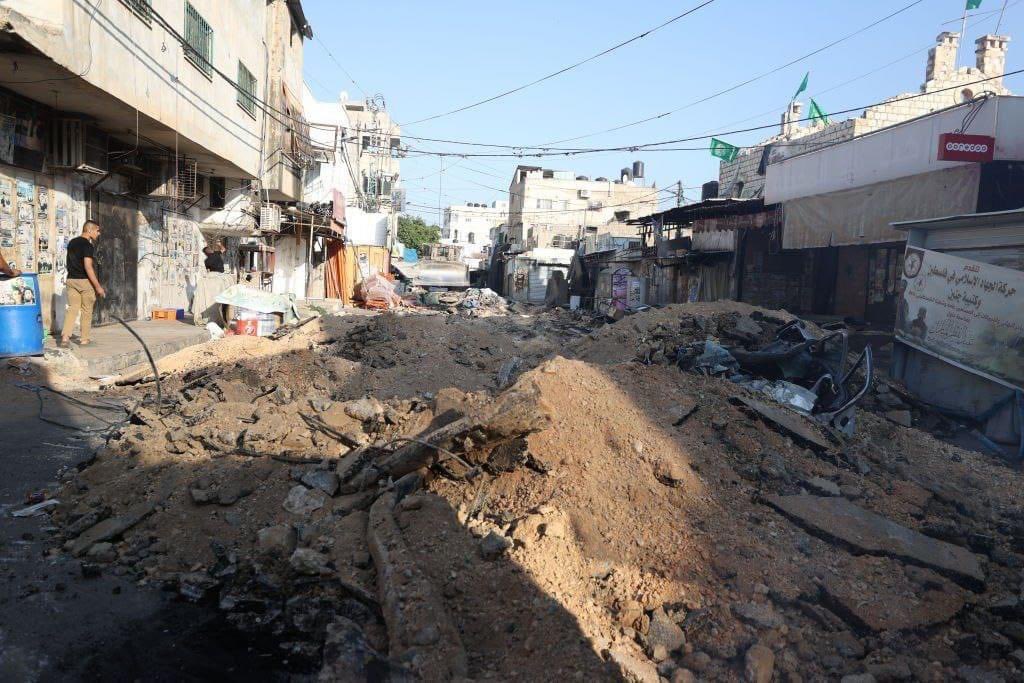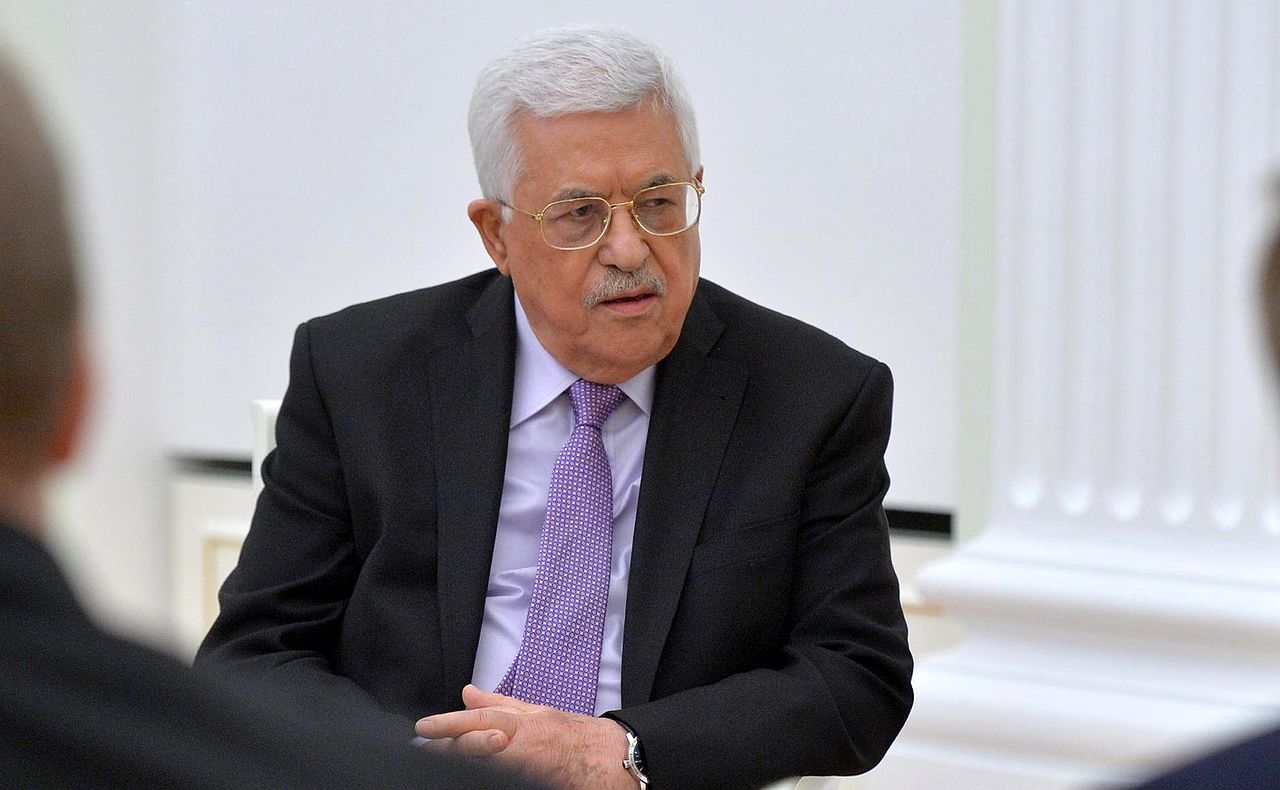
Beginning after midnight on 3 July, a storm swept over the Jenin refugee camp in Palestine, lasting 48 hours. It left behind scenes that resembled hell on Earth. The storm was provoked by a raid of the Israeli army.
The simultaneous use of air and ground raids was combined with a ground advance in and around the refugee camp using huge military bulldozers. These were used to smash everything in their path: roads, water and sewage systems, crushing cars and damaging buildings. Israeli forces fired live bullets and tear gas into local hospitals on several occasions to “drive out” the terrorists.
These were scenes that Jenin hasn’t seen since the 2002 siege more than 20 years ago, when half of the refugee camp was destroyed in Israel’s Operation ‘Defensive Shield’.
When Israeli troops left on the morning of Wednesday 5 July, Jenin resembled the landscape in Gaza after the 2021 Israeli offensive, with streets reduced to muddy drains after being hit by bombs and rockets.
According to the Minister of Health of the Palestine Authority (PA), thirteen were killed (eleven of them between the ages of 16 and 23) and at least 150 were wounded. Of the 16,000 thousand people living in the refugee camp, 3,000 have had to leave their homes due to heavy damage.
In a stroke of macabre irony, the Israeli army codenamed this massacre, “Operation Home and Garden”. What we have here is a genuine war crime. But where were the cries of outrage from the western media?
There was no press conference by European Commission President Von der Leyen or NATO Secretary General Stoltenberg condemning these indiscriminate bombings. Not even the UN dared to point the finger of blame at Israel. Indeed, the UN Secretary General limited himself to expressing his “deep concern”, saying that “all military operations must be conducted with respect for international humanitarian law”.
Ah, the UN is not calling this an act of war. On the contrary, it is merely a “military operation” – a military operation that did not hesitate to kill teenagers! We can all agree, this sounds much nicer!
These atrocities make as clear as day the total hypocrisy of the western media. They cry to the heavens when Putin in Russia euphemistically refers to the invasion of Ukraine as a “special military operation”, banning the word “war”, but with respect to Israel they voluntarily adopt the same phraseology of the Netanyahu government.
We can be sure that no court in the Hague will ever condemn the Israeli government for these war crimes.
Stronghold of Palestinian resistance
Jenin, situated in the north of the West Bank, is a traditional stronghold of Palestinian resistance. It was in this city that the Palestinian journalist Shireen Abu Akleh was killed last year. And again in Jenin, in January, another raid by the Israeli army left 10 people dead.

This latest attack had been prepared for weeks and preceded by a deafening media offensive on the part of the most right-wing government in Israel’s history.
On 25 June, Israeli ‘Security’ Minister Itamar Ben-Gvir openly called for a broad military offensive in the West Bank: “The Land of Israel must be colonised [and] a military operation launched. Demolish buildings, eliminate terrorists. Not one or two, but tens and hundreds, even thousands if necessary.”
In Zionist rhetoric, every Palestinian is a ‘terrorist’, including women and children.
Along with satisfying the appetites of these extremist elements, the raising of the Palestinian bogeyman serves to divert the attention of the Israeli population.
Netanyahu faced months of mass mobilisation against his reform. After temporarily suspending debate over the law at the end of April out of fear of escalating street protests, he proposed to reinitiate the debate in May. But with that, the protests also resumed. Given that the leaders of the movement are bourgeois politicians, they were able to find common ground with Netanyahu on the Palestinian issue.
This leadership is one of the main weaknesses of the protests, who represented nothing more than different factions of the Israeli ruling class.
Breaking up the West Bank
The Israeli strategy is clear: they are trying to break the resistance of the Palestinians by dividing the West Bank into small, isolated pockets. In the eyes of the Israeli state, Jenin, Nablus and Ramallah must be isolated from each other, so that the Israeli army can come and go as they please, unleashing the maximum violence with the least resistance.
To achieve this, they rely on a key bulwark of reaction: the 700,000 settlers living in the occupied territories of the West Bank and East Jerusalem. At the end of June, the government authorised illegal settlements for another 5,000 Israelis. These settlements are in direct violation of multiple international treaties, yet all are not equal before the law – the friends of imperialism are certainly “more equal” than others.
These settlers are used by the army as auxiliaries: they constantly engage in provocations by committing barefaced terrorist attacks against the Palestinian population. Self-defence by the Palestinians is then used as an excuse for the Israeli army to intervene in the villages and refugee camps.

The incursions of the Israeli army into the West Bank have also become increasingly frequent due to the deep crisis of the Palestinian Authority (PA). In the Oslo Accords, signed almost 30 years ago in May 1994, the PA’s function was laid out clearly: its purpose is to police the Palestinians and prevent any mobilisation of the masses. The PA is now incapable of performing this duty.
Palestinian President Mahmoud Abbas (also known as Abu Mazen), Fatah chairman and President of the Palestinian National Authority, is an old and sick man, who has been totally discredited in the eyes of the masses. No elections have been held in the West Bank since 2006. His government only survives because of the credit provided to it by Israel and the United States.
However, for the Israeli political and military leadership, the question of what to do with the PA is yet to be answered. One section of the ruling class, including Netanyahu, is betting on the PA, because it helps maintain a semblance of stability, given that it guarantees jobs and public services to millions of Palestinians.
Others are beginning to ask the question: “How should the PA be treated, as part of the problem or as part of the solution?” Meir Ben Shabbat, former government advisor for National Security, speaking on the incursion in Jenin, stated: “If the objective of the operation is to liberate the area and then hand it over to the Palestinian Authority, then it is not worth the risks associated with such a vast offensive.” The reason for this is simple – there is no trust in the ability of the PA to fight the Palestinian armed groups.
The rise of these armed groups, including the Jenin Brigades and the Lions’ Den in Nablus, is a real change in the situation in Palestine. Even groups such as the Jenin Brigades, which originated on the initiative of the Palestinian Islamic Jihad, are also open to members of other political groups and to all young people who want to fight the occupation.
These groups enjoy widespread support. According to an opinion poll by the Palestinian Centre for Policy and Survey Research, “68 percent support the formation of armed groups, such as the ‘Lions’ Den,’ and 87 percent believe the PA does not have the right to arrest members of these groups.”
It is also noteworthy that the poll finds “61 percent expect the eruption of a third armed intifada” and practically the same percentage believes that the PA will not take part in it.
This mass support means that, despite the Israeli army’s significantly greater military strength, their goal of completely eradicating armed resistance in the West Bank will be very difficult to achieve.
For a new Intifada!
An important step in the radicalisation of these layers was the mass movement following the bombing of Gaza in 2021, which led to the general strike on 18 May of that year.
There is a whole generation of young people who were born after the Oslo Accords and even after Arafat’s death in 2004. For them, Fatah is not the organisation that their parents or grandparents knew it to be. In their eyes, it no longer symbolises resistance against the occupation. Instead, Fatah has become recognised as the organisation that leads the government in Ramallah, full of corrupt politicians who collaborate with Israel in suppressing their struggle. They do not see the so-called benefits of the creation of the PA, which has only helped the Palestinian bourgeoisie. Instead, the PA represents a continuation of misery, privatisation, and hopelessness.
In short, Palestinian Authority no longer holds any authority among young people. According to Il Manifesto:
“When Mahmoud Al Aloul, Fatah’s number two, arrived in the refugee camp yesterday and from a stage tried to address messages of solidarity and support to the residents, he was overwhelmed with insults. Hundreds chased him away chanting ‘Barra, barra!’ (out, out!)”
The search for unity, and the distrust of the PA, are two important steps forward for the movement. At the same time, armed resistance alone cannot defeat the Israeli army. Only a mass movement of the working class and of the downtrodden masses, a new Intifada, could succeed in fulfilling this task.
What is required is a revolutionary programme, capable of linking the struggle for the liberation of Palestine with the struggle against the bourgeoisie, whether Arab or Israeli.
Only a class-based appeal could drive a wedge into the Zionist bloc, which is currently cemented by the lie that Israeli workers and bosses have the same interests because they are Jews.
Only a socialist federation of the Middle East could guarantee freedom and genuine self-determination for all the people of the region.

